Electro-rock duo Boom Boom Satellites have remixed "A Fact of Life" by screamo outfit Fact, and the video is a fiendish feast of Noh-inspired abstract dance.
+ Video
Electro-rock duo Boom Boom Satellites have remixed "A Fact of Life" by screamo outfit Fact, and the video is a fiendish feast of Noh-inspired abstract dance.
+ Video
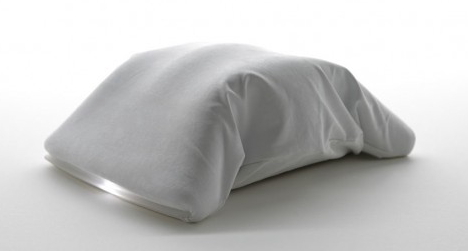
Move over, Roomba. Make way for Fukitorimushi, an autonomous floor-cleaning robot that crawls like an inchworm and uses a super-absorbent nanofiber cloth to wipe up microscopic dust and residue that ordinary vacuums leave behind. Unveiled at the recent Tokyo Fiber Senseware exposition in Milan, Fukitorimushi (lit. "wipe-up bug") is designed by Panasonic and incorporates nanofiber technology developed by textile maker Teijin, Ltd.
The robot cleans by simply dragging its nanocloth belly across the floor as it slowly crawls around in search of dirt. (Watch the video.)
Fukitorimushi, which moves around by flexing and stretching its body like an inchworm, uses "feelers" of blue-white light to search for floor grime. When it finds a dirty spot, the robot emits a red light and devotes extra effort to cleaning that area. After it has finished cleaning, the machine returns to its charging station to replenish its battery.
Fukitorimushi's body is covered in Teijin's Nanofront cloth, which is made of polyester filament fibers measuring 700 nanometers in diameter (about 7,500 times thinner than the average human hair). The nanofibers significantly increase the fabric's surface area and porosity, giving it superior wiping characteristics and the ability to absorb oil and ultra-fine dust particles less than one micron in diameter. The large surface contact area also increases the fabric's friction with the floor and makes it resistant to sliding. The robot relies on this increased friction to push itself forward while wiping the floor.
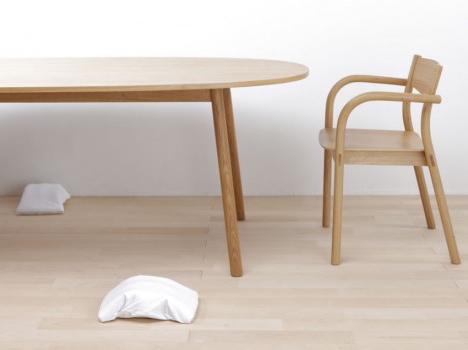
According to its creators, Fukitorimushi is also designed to engage the emotions and foster a closer relationship between humans and machines. The way the machine creeps across the floor may seem a little strange at first, but the designers say people tend to grow fond of the robotic creature after watching it for a while. In addition, the owner must periodically replace Fukitorimushi's nanocloth cover with a clean one. The designers suggest this task of looking after the Fukitorimushi may encourage a pet-like affection for the machine.
[Link: Tokyo Fiber '09 Senseware Guide (PDF)]
A pair of Robonova-1 kit robots teamed up with "Chi" (Naoki Nokubo) of the defunct pop-idol trio Shuchishin for a special performance on Fuji TV's "The Best House 1-2-3" variety show last night. (Watch it.)
The new trio -- named "Robo-Shuchishin" -- performed "Shuchishin," the original group's self-titled hit single. Although the robot replacements sang off-key and sounded rather robotic, one of the little guys pulled off a surprise by taking its pre-show "break a leg" instructions literally (skip 1:20 into the video).
An English-subtitled version of Takashi Taniguchi's delightfully absurd "Mr. Ando of the Woods" has made its way online.
+ Video
- Also by Taniguchi: Salaryman Man
Osada Genki, a physicist turned painter and ambient noise artist, creates highly textural, abstract audiovisual paintings using snippets of altered video -- often of human faces and forms -- smothered under thick layers of kaleidoscopic digital glitchiness and wrapped in lush, gritty soundscapes.
More on Osada Genki's YouTube channel and website.
Takeuchi Taijin's "A wolf loves pork" is a mind-boggling stop-motion animation piece created from hundreds, if not thousands, of printed photographs that traverse the walls and furniture of a one-room apartment.
[Link: A wolf loves pork.]

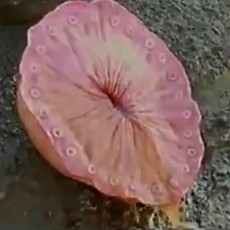
Here is some provocative video of a mysterious creature encountered by Japanese fishermen on a rocky seashore.
The excitement begins when the three men notice a group of strange animals on the side of a nearby cliff. Curious, they approach for a closer look and eventually manage to corner one. (The close encounter begins at 1:45 into the video.)
The slimy, pulsating beast -- like something out of a Cronenberg film -- appears to be some sort of amphibious sea animal that ventured ashore. After poking and prodding the creature with a stick and flipping it over to reveal an undulating, sphincter-like orifice, one of the men rashly -- and unwisely -- decides to give it a swig of his carbonated beverage. You don't want to miss the explosive conclusion.
Is this a bizarre new species? Alien creature? Spectacular hoax? You be the judge.

In the nearly two years since it was first unveiled to the world, the Child-robot with Biomimetic Body, or CB2, has been developing social skills by interacting with humans and watching their facial expressions, according to its creators at Osaka University.
Comprised of robotics engineers, brain specialists, psychologists and other experts, the research team has been teaching the android to think like a baby by having it evaluate facial expressions and classify them into basic categories, such as happiness and sadness.
The 130-centimter (4 ft 4 in) tall, 33-kilogram (73 lb) robot is equipped with eye cameras that record emotional expressions. Designed to learn like an infant, the robot can memorize facial expressions and match them with physical sensations, which it detects via 197 pressure sensors under a suit of soft, silicone skin.
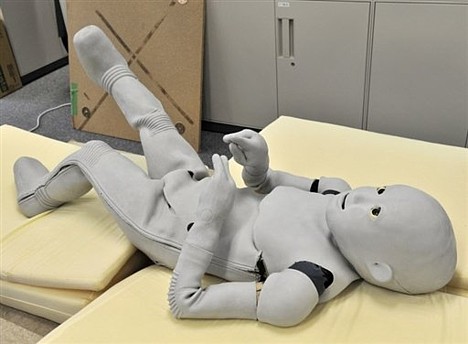
In addition to watching faces, CB2 has been learning to walk. With 51 pneumatic "muscles," the little android can now amble through a room more smoothly than it could nearly two years ago, though it still requires the aid of a human.
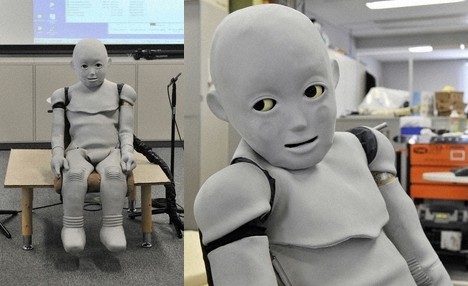
Within two years, the researchers hope the robot will gain the intelligence of a two-year-old child and the ability to speak in basic sentences. In the coming decades, the researchers expect to develop a "robo species" that has learning abilities somewhere between those of humans and chimps.
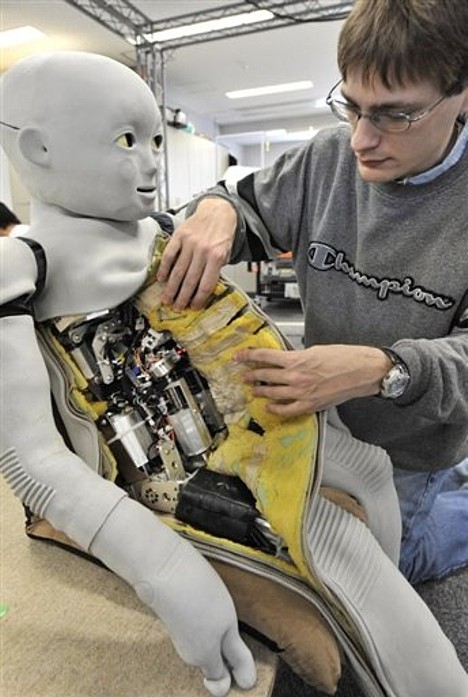
[Link: AFP]